- Home
- Alison Weir
Eleanor of Aquitaine: By the Wrath of God, Queen of England Page 5
Eleanor of Aquitaine: By the Wrath of God, Queen of England Read online
Page 5
On Louis's return, he and the Duchess wasted no time in setting off
26
for Orléans and Paris, Eleanor taking with her her sister Petronilla and her Poitevin household. The extravagance of the latter shocked the French, who disparagingly described them as "better feeders than fighters." The people of Aquitaine and Poitou were sad to see their duchess depart, for they would now have an alien overlord who spoke a different language and whose administrators were gradually being installed in key posts throughout the region. The presence of Frenchmen was resented by the fiercely independent indigenous population, and would inevitably cause tension and ethnic strife in some areas.
And so Eleanor rode to a new life in Paris. On the way, the royal cavalcade was intercepted by a messenger with heart-stopping news: Louis VI had died of dysentery on 1 August, and young Louis and his wife were now King and Queen of France.
Then, as now, Paris wove its spell on people. "How apt thou art, O Paris, to bewitch and seduce!" wrote Pierre de la Celle, a correspondent of John of Salisbury. "There was an abundance of men, suave and agreeable, an abundance of all good things, gay streets, rare food, incomparable wine!"
Paris in the twelfth century boasted a population of about 200,000 and was increasing in size and prosperity. The city, which was not recognised as the capital of France until about 1190, had originated as a settlement on an oval island in the Seine, the He de la Cite, and gradually spread outwards from the banks of the river. On the right bank, still largely rural, was the thriving commercial heart of Paris, the home of merchants and the emerging craft guilds, while on the left bank were to be found the great abbeys of Sainte-Genevieve, Saint-Victor, and Saint-Germain-des-Pres, as well as the famous schools of scholarship and debate, which by the middle of the century were preeminent in the intellectual life of western Christendom and in the decades to come would evolve into France's first university.
During this period, Europe was witnessing an intellectual revival that flourished in the cathedral schools and emerging universities, and that came to have a profound effect on European culture and thought. This movement is now referred to as the Twelfth-Century Renaissance, and much of it was centred upon Paris.
Thanks to the rediscovery of the works of Aristotle, and Greek and Roman writers such as Plato, Aristotle, Ovid, Virgil, and Martial, hitherto preserved by the Arabs and disseminated through wider contact with Moorish Spain and the Orient, scholars became reacquainted with classical learning, although some of this was only through Latin translations: Greek was known only to very few learned men. At Chartres
27
in France, scholars of Plato even began disseminating an early form of humanism.
What was no less than a cultural revolution led to the establishment of famous schools in Paris and other European cities, notably Oxford, which gradually established itself as a university after English students were recalled from Paris in 1167 as a result of Henry II's quarrel with Archbishop Becket.
In these cathedral schools, outstanding scholars such as Peter Abelard, in Paris-- one of whose pupils was the brilliant John of Salisbury-- and Franciscus Gratianus, in Bologna, held students spellbound with the breadth of their vision and learning. And from these schools, often held in the open air, evolved universities that would become treasure houses of scholarship and knowledge.
The Romans had erected the town of Lutetia on the site of a small Gaulish settlement on the Seine, and there remained a number of Roman ruins in the city, including its crumbling wall, while on the He de la Cite itself, which was linked to the banks by two stone bridges, were two large buildings that towered above the other rooftops21-- the King's chief residence, the Cite Palace, and the Cathedral of Notre-Dame, both dating from Merovingian times.
In summer the city was often unbearable, with its stinking, unpaved streets and swarms of black flies, and the King would sometimes be obliged to seek refuge in his hunting lodge at Bethizy. On the outskirts of Paris were also to be found orchards, vineyards, and small farms, while on the banks of the Seine there were a number of mill wheels.
It was to this city that Louis brought his young bride in August 1137. No effort had been spared in affording them a magnificent welcome, and enthusiastic crowds lined a route that ended at the famous tree stump situated beneath an olive tree. This was where the royalty of France customarily dismounted before entering the Cite Palace, which occupied a site where the Palais de Justice now stands, the towers of the Conciergerie being all that remain of it.
The young Queen, used to the luxurious residences of the south, may well have found this palace, which was now to be her chief residence, spartan and unwelcoming. Sited on the western edge of the island, it consisted of a grim, decaying stone tower ventilated only by arrow-slits and accessed by a wide flight of worn marble stairs. Its rooms were small, dark, and draughty, and the atmosphere was more suited to a monastery than to a royal court. It seems likely that Eleanor soon made her dissatisfaction felt, because during the following winter the King ordered that her apartments be enlarged and modernised. Wooden
28
shutters were fitted over the arrow-slits to minimise the draughts, and a very new innovation, a fireplace and chimney, was built into the wall. Eleanor herself commissioned a series of tapestries from the workshops in Bourges.
The palace gardens were more to Eleanor's taste. Enclosed by walls and trellised vines, they had paths bordered with acanthus and shaded by willow, fig, cypress, and pear trees; in the flower beds grew roses, lilies, and poppies, and there was a herb garden smelling fragrantly of mint, rue, watercress, and absinthe.
There was no literary tradition or entertainment at the French court; the slender surviving evidence suggests that Eleanor tried to re-create the ambience in which she had grown up, commissioning plays in Latin and encouraging troubadours and jongleurs to visit and entertain her household and guests. The conservative French flinched at the ideals of love expressed in the troubadours' songs, but they could not deny that their new Queen was a civilising influence upon court manners. It was she who insisted upon the boards being laid with tablecloths and napkins, and who commanded the pages to wash their hands before serving at table. After watching the cantor in the Chapel of St. Nicholas within the palace, she had him dismissed and replaced with one of her own choice, who was infinitely more talented at conducting a choir.
Court life for a queen of France at that time was, however, stultifyingly routine. Eleanor found that she was expected to be no more than a decorative asset to her husband, the mother of his heirs and the arbiter of good taste and modesty. Her days were an endless round of prayers and trivia. In good weather she and her ladies would sit in the palace gardens or go hawking, which she enjoyed. Sometimes Louis invited the schools to meet in summer in the palace gardens; the brilliant lecturer Peter Abelard claimed that many noble ladies flocked to attend his open-air lectures, but it is nowhere stated that Eleanor was among them.
On wet or cold days, the Queen and her ladies were confined to their apartments, where they spent their hours playing chess, singing, recounting stories, telling riddles, or idly conversing. It was a suffocating existence for a girl of Eleanor's intelligence and independent spirit, and it is not surprising that she tried to circumvent custom and tradition by indulging in unconventional pursuits of her own that disturbed and sometimes shocked Louis's courtiers, who were already grumbling at the expense and size of the Queen's household.
There can have been no doubt in Eleanor's mind as to what was expected of her as a wife. In her day, women were supposed to be chaste both inside and outside marriage, virginity and celibacy being highly
29
prized states. When it came to fornication, women were usually apportioned the blame, because they were the descendants of Eve, who had tempted Adam in the Garden of Eden, with such dire consequences. Women, the Church taught, were the weaker vessel, the gateway to the Devil, and therefore the source of all lechery. St. Bernard of Clairvaux wro
te: "To live with a woman without danger is more difficult than raising the dead to life." Noblewomen, he felt, were the most dangerous of all. Women were therefore kept firmly in their place in order to prevent them from luring men away from the paths of righteousness.
Promiscuity-- and its often inevitable consequence, illicit pregnancy-- brought great shame upon a woman and her family, and was punished by fines, social ostracism, and even, in the case of aristocratic and royal women, execution. Unmarried women who indulged in fornication devalued themselves on the marriage market. In England, women who were sexually experienced were not permitted to accuse men of rape in the King's courts. Female adultery was seen as a particularly serious offence, since it jeopardised the laws of inheritance.
Men, however, often indulged in casual sex and adultery with impunity. Because the virtue of high-born women was jealously guarded, many men sought sexual adventures with lower-class women. Prostitution was common and official brothels were licensed and subject to inspection in many urban areas. There was no effective contraception apart from withdrawal, and the Church frowned upon that anyway: this was why so many aristocratic and royal bastards were born during this period. Bastardy carried a social stigma and was a barrier, in common law, to inheritance. Although the Church did have the power to legitimate bastards, this was rarely exercised, for it was generally agreed that illegitimate offspring should bear the consequences of their parents' sin.
Divorce was unknown, but marriages could be annulled (or declared invalid) by the Church on a number of grounds: consanguinity-- strictly speaking, close cousins were not allowed to marry, although dispensations were granted in certain circumstances; the existence of a former pre-contract-- a betrothal was considered as binding as a marriage; impotence or non-consummation-- because there had to be proof of this, which was often intrusive and embarrassing, few cases ever reached the Church courts; and lack of consent to the marriage-- the Church considered mutual consent to be an essential element of the marriage contract. Eleanor and Louis had freely consented to theirs, and expected to be bound together for life. Yet the seeds of discord had already been sown.
The indications that there would be problems ahead within the royal
30
marriage were evident from the start. The young couple came from strikingly different backgrounds, had divergent interests, and were very unalike in temperament.
Suger described the new King as "a child in the flower of his age, and of great sweetness of temper, the hope of the good and the terror of the wicked." According to his secretary, later on his chaplain, Odo de Deuil, Louis VII was a prince "whose entire life is a model of virtue, for when, a mere boy, he began to reign, worldly glory did not cause him sensual delight." He continued his studies at nearby Notre-Dame, beautified the royal chapels, assisted at mass, joined in the singing of the cathedral choir, kept the vigils each day, fasted with the monks on bread and water every Friday, and was assiduous at his private devotions. He was often to be seen at the heels of the Bishop, and he took care in his humility not to inconvenience anyone at worship.22 He dressed more like a humble clerk than a king, and disliked rich robes, pomp, and ceremony.
As a ruler, Louis allowed himself to be governed too much by his feelings and ideals and made many ill-judged decisions, some of which rebounded on him with disastrous consequences. "He was a man of warm devotion to God and of extraordinary lenity to his subjects and of notable reverence for the clergy, but he was rather more credulous than befits a king and prone to listen to advice that was unworthy of him," observed William of Newburgh. Yet when it came to matters of principle he could be inflexible. "Because he was gentle in manner and kind-hearted, unaffectedly simple toward men of any rank, he seemed to some lacking in force," wrote Walter Map, "yet he was the strictest judge, and even when it cost him tears, he meted justice with even hand to meek and arrogant alike." However, his rare but savage outbursts of temper sometimes provoked him to rash acts.
Louis carried on his father's policy of reaffirming the rights of the crown, extending the royal demesne, and curbing the ambitions of his vassals. Additionally, he took steps to ensure that the royal administration became more efficient. He saw himself as God's vice-regent on Earth, and was so sincere in his convictions that few doubted his integrity. His admirable sense of honour was on occasion a serious disadvantage when it came to dealing with more wily and pragmatic princes. Over the years, however, Louis came to be recognised as a man who, in many respects, fulfilled the knightly ideal, and he earned international respect and prestige for his personal qualities.
There is no doubt about Louis's feelings for Eleanor: "he loved the Queen almost beyond reason," John of Salisbury observed in 1149, commenting that the King's immoderate affection was "almost puerile." Although Louis was Eleanor's senior by a year or two, he was immature
31
for his age and perhaps somewhat overawed by this forceful, sophisticated beauty. He showed his devotion by allowing her to have her way in most things, and by showering her with extravagant gifts: she took her pick from luxury goods brought to the palace by merchants trading with the Orient.
Yet Louis did not visit his wife's bed very often,23 and then only in accordance with the teachings of the Church, which decreed that sex was to be indulged in solely for the purpose of procreation, and not for pleasure, even within marriage. A husband or wife did not have the right either to demand sex from his or her spouse or to refuse it, and there was a catalogue of forbidden sexual practices, notably homosexuality, bestiality, certain sexual positions, masturbation, the use of aphrodisiacs, and oral sex, which could incur a penance of three years' duration. Nor were people supposed to make love on Sundays, holy days, or feast days, or during Lent, pregnancy, or menstruation. People believed that if these rules were disobeyed, deformed children or lepers might result.
Unfortunately, Louis's conjugal visits were not frequent enough to fulfil their purpose, and apart from a miscarriage the Queen suffered during the first or second year of their marriage,24 the hoped-for heir to France and Aquitaine showed no sign of making his appearance. It became apparent only much later how deeply this sexual neglect affected the more worldly and passionate Eleanor.
Yet sex was not the only problem within the royal marriage. To Louis, it seemed natural to turn to Abbot Suger, his former teacher and his father's chief adviser, for help in governing his realm. He himself was, after all, young and inexperienced, and he relied heavily on the older man's wisdom, statecraft, and excellent memory-- the Abbot knew the Bible almost by heart.
Suger was now fifty-six. Born a serf, he was a gifted and compassionate man who had risen through the ranks of the Church by virtue of his own abilities, and become Abbot of Saint-Denis in 1122. He was utterly devoted to the French monarchy, and dedicated his life to enhancing its power and prestige. It was Suger who underlined the sacred nature and function of kingship by insisting that its rituals and ceremonials be rigorously and splendidly observed. At the same time, he was practical, energetic, and cautious, and had sound financial sense. His life's great project was the rebuilding of the abbey church of Saint-Denis-- for centuries the mausoleum of the kings of France-- in the new Gothic style, with soaring stained-glass windows and sumptuous ornamentation. Bernard of Clairvaux had once criticised Suger for his love of worldly luxuries; the Abbot had taken his words to heart and now lived an ascetic life in a tiny, bare cell at Saint-Denis.
32
The headstrong Eleanor thought it was equally natural for Louis to seek advice from her. What she lacked in judgement she more than compensated for in enthusiasm and impetuosity, and many older people at court looked on in alarm as it became evident how much influence she exerted on her idealistic young husband. She seems from the first to have resented Suger, Odo de Deuil, and the other austere ecclesiastics who controlled the King and the government, and to have insisted that Louis make his own decisions without reference to them. She also asserted that she was better qualified than
Louis's ministers to advise on Aquitainian affairs. Suger testifies that a number of the King's clerical advisers were dismissed after the marriage, while those that remained had no choice but to acclimatise themselves to the changes that the Queen was determined to force on a hitherto sober court.
After the dismissals, however, either Louis or his ministers, or more probably Abbot Suger-- who felt that both Louis and Eleanor were too young and immature to exercise power with responsibility-- took steps to ensure that Eleanor's influence was confined to the domestic sphere, leaving the way clear for Suger himself to teach the King the art of wise government. The Abbot could not, however, control what went on between Louis and Eleanor in the privacy of their apartments; nor did he attempt to come between husband and wife, being committed to the success of their marriage for the sake of Eleanor's inheritance.
This decision to curb the Queen's power represented a break with tradition. Louis VI's wife and other French consorts had played an active political role, being consulted by their husbands on matters of policy and openly sharing in the decision-making process. If Louis consulted Eleanor-- and there is reason to believe he did, and that she exerted her influence-- it was in private, for during the first decade of the reign she played no more than a ceremonial role in public life and there is no record of her presence in the King's court; nor does her name appear on many of his charters. These changes in the fundamental role of the queen consort set a precedent for future queens of France, who mostly found themselves without power or political influence.

 Richard III and the Princes in the Tower
Richard III and the Princes in the Tower Britain's Royal Families: The Complete Genealogy
Britain's Royal Families: The Complete Genealogy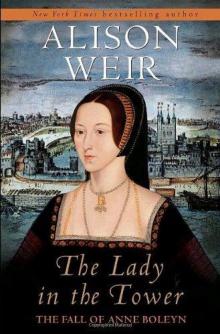 The Lady in the Tower: The Fall of Anne Boleyn
The Lady in the Tower: The Fall of Anne Boleyn Six Wives of Henry VIII
Six Wives of Henry VIII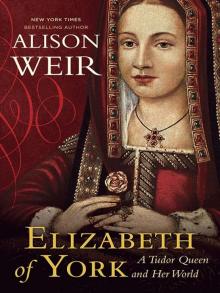 Elizabeth of York: A Tudor Queen and Her World
Elizabeth of York: A Tudor Queen and Her World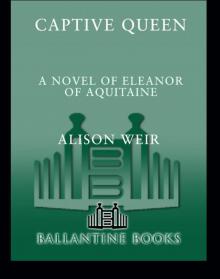 Captive Queen
Captive Queen Innocent Traitor
Innocent Traitor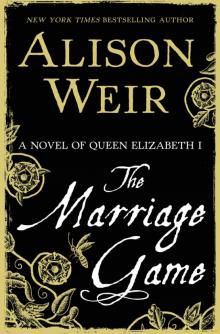 The Marriage Game
The Marriage Game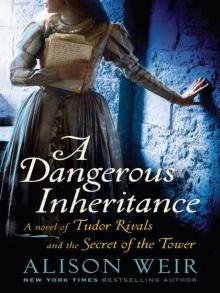 A Dangerous Inheritance
A Dangerous Inheritance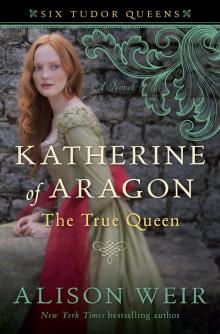 Katherine of Aragón: The True Queen
Katherine of Aragón: The True Queen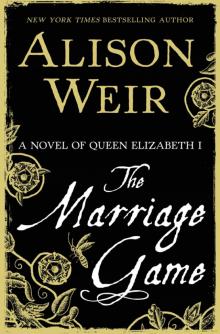 The Marriage Game: A Novel of Queen Elizabeth I
The Marriage Game: A Novel of Queen Elizabeth I Princes in the Tower
Princes in the Tower Anne Boleyn: A King's Obsession
Anne Boleyn: A King's Obsession Traitors of the Tower
Traitors of the Tower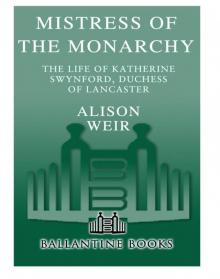 Mistress of the Monarchy: The Life of Katherine Swynford, Duchess of Lancaster
Mistress of the Monarchy: The Life of Katherine Swynford, Duchess of Lancaster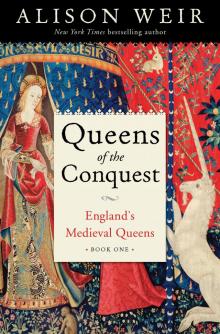 Queens of the Conquest: England’s Medieval Queens
Queens of the Conquest: England’s Medieval Queens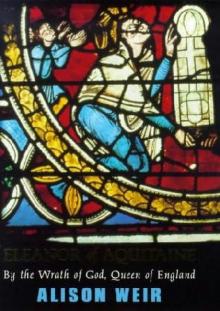 Eleanor of Aquitaine: A Life
Eleanor of Aquitaine: A Life Mary, Queen of Scots, and the Murder of Lord Darnley
Mary, Queen of Scots, and the Murder of Lord Darnley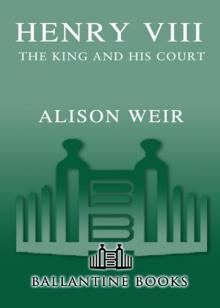 Henry VIII: The King and His Court
Henry VIII: The King and His Court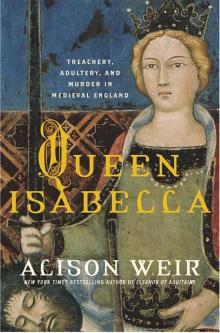 Queen Isabella: Treachery, Adultery, and Murder in Medieval England
Queen Isabella: Treachery, Adultery, and Murder in Medieval England Katheryn Howard, the Scandalous Queen
Katheryn Howard, the Scandalous Queen Arthur- Prince of the Roses
Arthur- Prince of the Roses The Wars of the Roses
The Wars of the Roses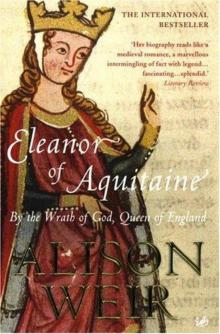 Eleanor of Aquitaine: By the Wrath of God, Queen of England
Eleanor of Aquitaine: By the Wrath of God, Queen of England Mary Boleyn: The Great and Infamous Whore
Mary Boleyn: The Great and Infamous Whore Jane Seymour: The Haunted Queen
Jane Seymour: The Haunted Queen Anna of Kleve, the Princess in the Portrait
Anna of Kleve, the Princess in the Portrait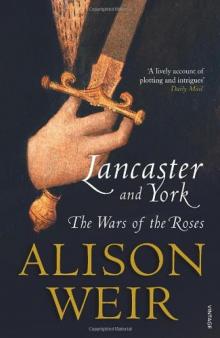 Lancaster and York: The Wars of the Roses
Lancaster and York: The Wars of the Roses The Grandmother's Tale
The Grandmother's Tale The Princess of Scotland (Six Tudor Queens #5.5)
The Princess of Scotland (Six Tudor Queens #5.5)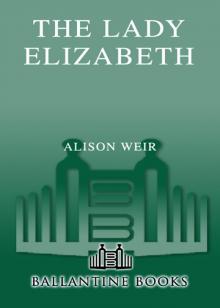 The Lady Elizabeth
The Lady Elizabeth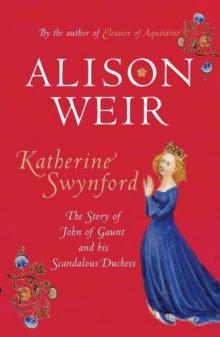 Katherine Swynford: The Story of John of Gaunt and His Scandalous Duchess
Katherine Swynford: The Story of John of Gaunt and His Scandalous Duchess The Curse of the Hungerfords
The Curse of the Hungerfords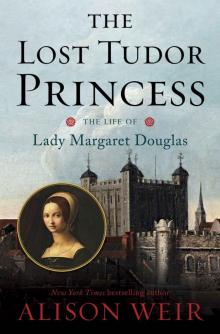 The Lost Tudor Princess: The Life of Lady Margaret Douglas
The Lost Tudor Princess: The Life of Lady Margaret Douglas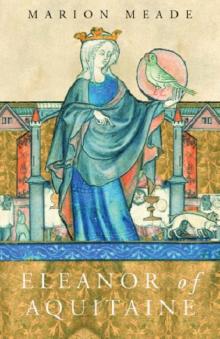 Eleanor of Aquitaine
Eleanor of Aquitaine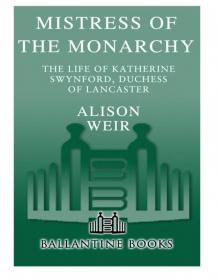 Mistress of the Monarchy
Mistress of the Monarchy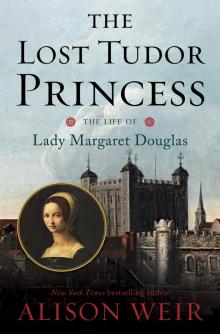 The Lost Tudor Princess
The Lost Tudor Princess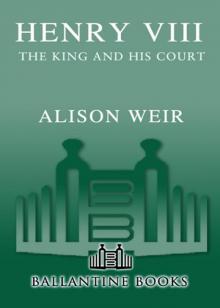 Henry VIII
Henry VIII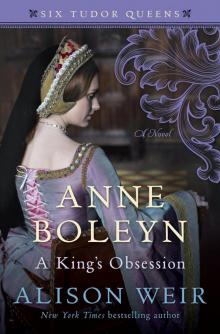 Anne Boleyn, a King's Obsession
Anne Boleyn, a King's Obsession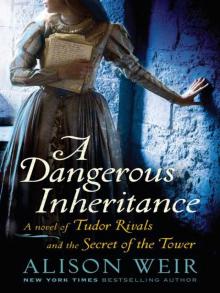 A Dangerous Inheritance: A Novel of Tudor Rivals and the Secret of the Tower
A Dangerous Inheritance: A Novel of Tudor Rivals and the Secret of the Tower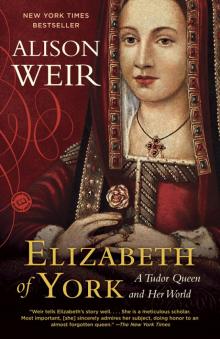 Elizabeth of York
Elizabeth of York Katherine of Aragon, the True Queen
Katherine of Aragon, the True Queen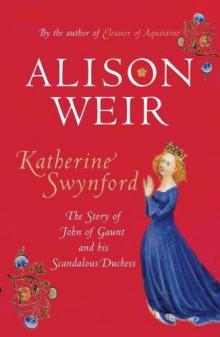 Katherine Swynford
Katherine Swynford Wars of the Roses
Wars of the Roses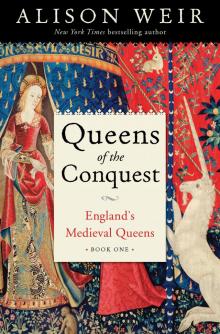 Queens of the Conquest
Queens of the Conquest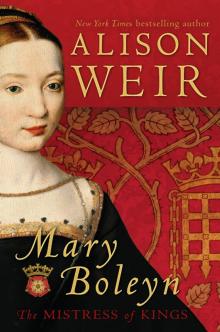 Mary Boleyn
Mary Boleyn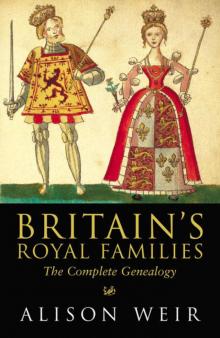 Britain's Royal Families
Britain's Royal Families The Tower Is Full of Ghosts Today
The Tower Is Full of Ghosts Today Life of Elizabeth I
Life of Elizabeth I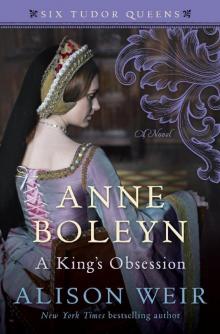 Anne Boleyn A King's Obssession
Anne Boleyn A King's Obssession Lancaster and York
Lancaster and York Jane Seymour, the Haunted Queen
Jane Seymour, the Haunted Queen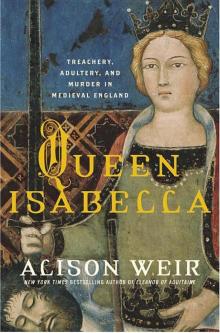 Queen Isabella
Queen Isabella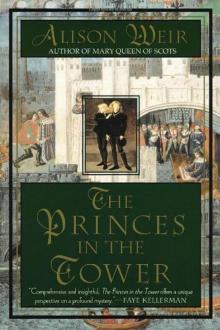 The princes in the tower
The princes in the tower